WHOEVER would have guessed that Irish history was so intrinsically shaped by nothing more than a fruitcake and bit of wax? Eamon de Valera served as Irish President for 14 years and was elected Taoiseach three times, but first he had to escape from the clutches of the English, and sneak his way back across the Irish Sea to join the Irish Republican movement. This is his incredible story.
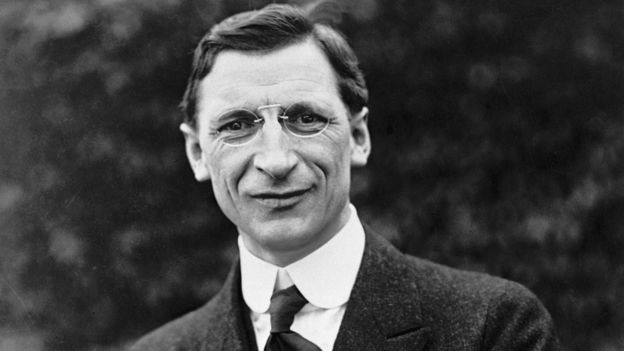 Eamon de Valera
Eamon de ValeraJust over 100 years ago, de Valera masterminded an Andy Dufresne-esque escape from Lincoln Prison - a facility opened 46 years prior to to the Irishman's incarceration, and had never had a single escapee. He'd been imprisoned on jumped on charges of conspiring with the Germans, in an attempt by the English to discredit him, Sinn Fein and the IRA. Due to his involvement in the 1916 Easter Rising, he wasn't exactly England's most popular foreign politician, and they calculatedly eliminated a threat to their stranglehold on the Irish state - or so they thought.
One day, when he was exercising in the prison yard at Lincoln, de Valera noticed a potential route of escape. A back-door, of sorts, which lead outside. His plan was simple: get a key, and go through the door.
Due to his Catholic background, he'd soon act as server in the prison chapel and he noticed the Chaplin had a set of keys, which appeared to open many of the doors around the facility. He knew he couldn't simply steal the keys, his plan would be snuffed out in no time, instead he got more creative.
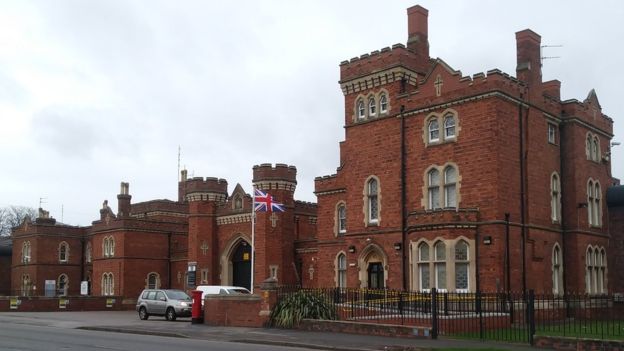 Lincoln Prison
Lincoln PrisonWhen the Chaplin's back was turned, he made an impression of the key on a wedge of wax he'd fashioned from a few of the chapel candles. With that done, he and his associates needed to find a way of getting the impression to the IRA.
Guards would scrutinise letters and mail coming in and out of the prison, so he couldn't send the lump of wax, nor could he write to his friends asking them to commission him a prison master-key (a tad obvious don't you think?), so he came up with a clever way of getting the message out.
Fellow prisoner Sean Milroy drew a cartoon on a Christmas postcard that disguised itself as an innocent bit of self-deprecating humour. The drawing depicted a drunken man trying to open a locked door with a key that wouldn't fit. The drawing of the key though, was a replica of the impression made on the wedge of wax. The proofreaders were duped, and the postcard was sent.
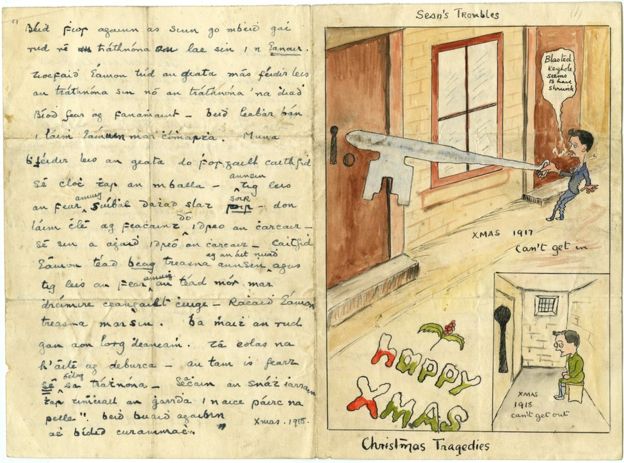 Genius. The drawing that was sent to the IRA so they could fashion a key for de Valera
Genius. The drawing that was sent to the IRA so they could fashion a key for de ValeraOn the outside, a key was created with dimensions akin to the drawing on the postcard, and it was to smuggled back into the prison in a cake.
Despite prison wardens poking the cake with a thin knife to check for such contraband, they failed to find the key and it reached de Valera. Agonisingly though, the key didn't fit the lock.
Figuring that the wax might have been mis-shaped before the drawing was made, de Valera would ask for another, this time disguising the design cleverly in the centre of a Celtic pattern. But again, the key that was smuggled in still wouldn't work.
A peculiar looking oblong fruitcake was baked. Hidden inside was a blank key, and a set of files so that the inmates could shape it themselves.
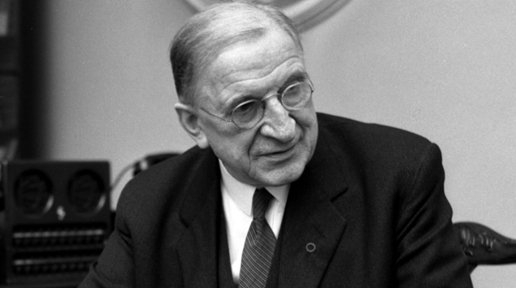 Eamon de Valera would serve as Irish President and Taoiseach after his escape
Eamon de Valera would serve as Irish President and Taoiseach after his escapeThen one February evening, de Valera, Milroy and a third man, Sean McGarry snuck out and raced across the misty prison yard and made their way to their escape door. On the other side of the door were a couple of top-ranking Republicans, Michael Collins and Harry Boland among others.
Collins had himself cut a key, and attempted to open the door from the outside, but his key snapped in the lock. For a moment, it looked as if they were done-for, and all their meticulous planning had gone down the drain. But Valera, with his accurately filed key, poked Collin's key out of the hole from the other side. The lock was opened and the three prisoners slipped away into the dark.
Having casually strolled passed a number of off-duty prison guards, who were loitering with their girlfriends outside, with arousing suspicion, they made their way to the Adam and Eve pub, where a taxi was waiting for them to whisk them to Worksop in Nottinghamshire.
By the time their escape had been discovered - around two hours later - they'd jumped into another taxi which had moved them to Sheffield. When they arrived, a third car was waiting to transport them to a safe-house in Manchester.
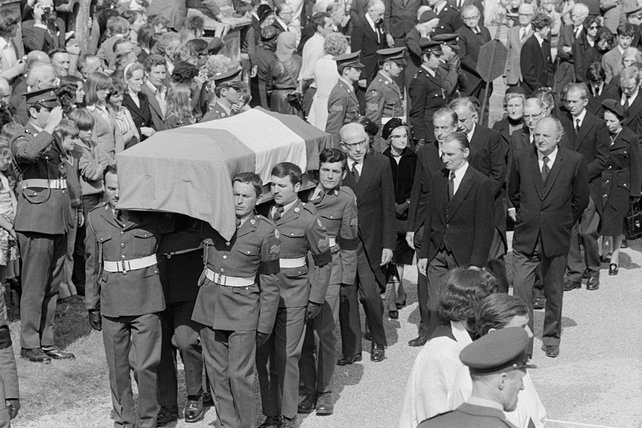 200,000 people lined the streets of Dublin when de Valera died.
200,000 people lined the streets of Dublin when de Valera died.Everything had to be smooth and slick and above all else, silent. It was. It had been organised by their most reliable organisers.
Briefly recounting his escape, de Valera said he paused for a moment after sneaking out the prison door, to lock it again behind him, but was hurried away by his entourage who insisted he be as quick as possible.
"Had I locked that door, nobody would ever have known how we had escaped," he said.
Sinn Fein had swept the 1918 elections during de Valera's incarceration and despite the lack of his presence, he won both his Clare East and Mayo East seats.
They successful member refused to take their seats in Westminster, and instead, on January 21, 1919, they gathered at Mansion House in Dublin to form the Irish Parliament, The Dail Eireann.
After his death in 1975, more than 200,000 people lined the streets of Dublin to pay their respects to a man who embodied the indomitable spirit of Irish Republicans during the early 20th century. His legacy is undeniably the Republic of Ireland's legacy. He helped shape the future of a nation, both in war and peace time.
But without the fruitcake, the candles and some savvy thinking, his escape might never have happened. Funny to think how thin the line is sometimes.

